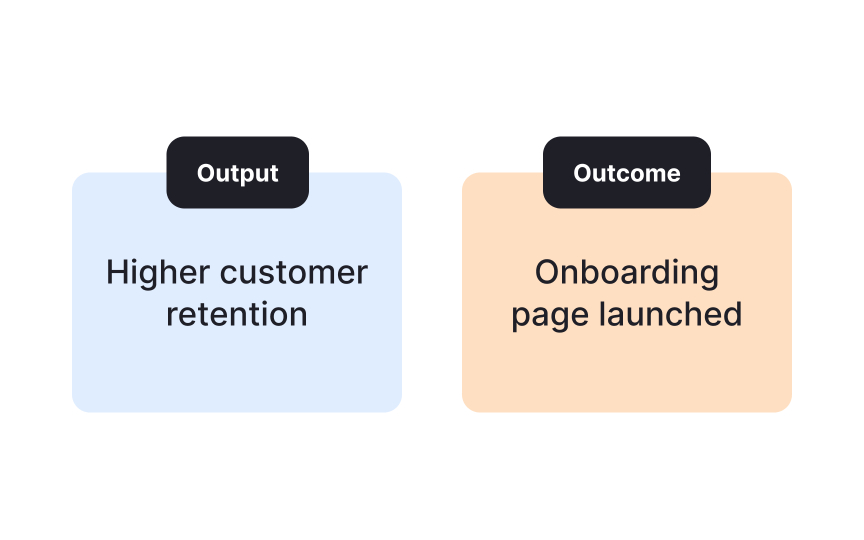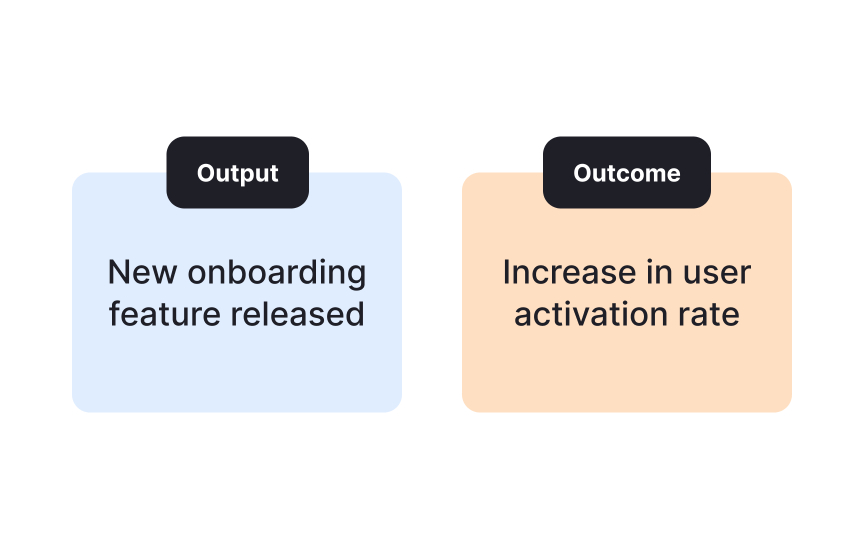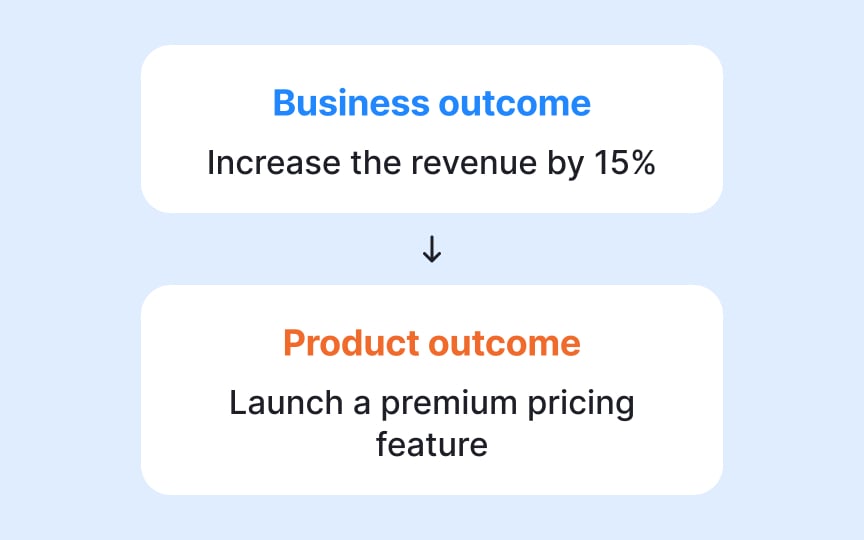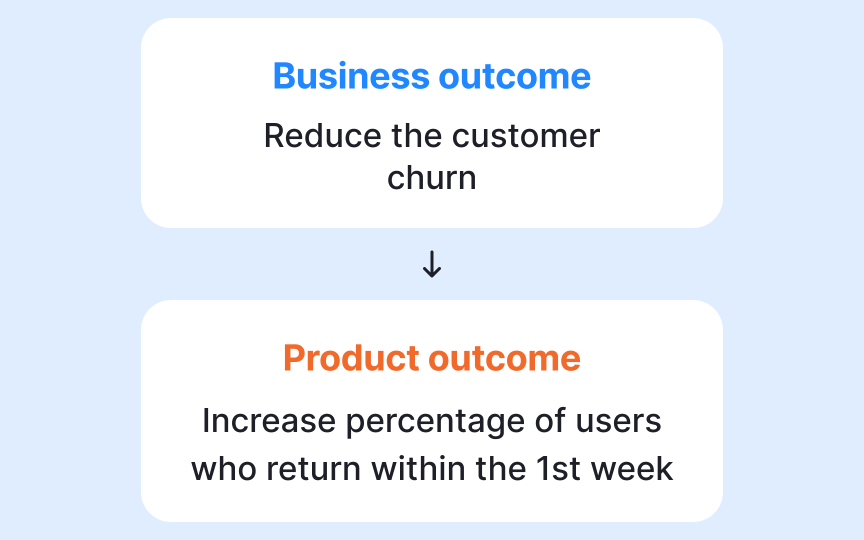From Static to Dynamic
Turn static plans into dynamic roadmaps that adapt to discovery, feedback, and changing goals.
Roadmaps that once served as rigid timelines no longer fit the pace of modern product development. Static documents often create a false sense of certainty, locking teams into outdated commitments. In contrast, dynamic roadmaps embrace agility. They adjust to ongoing discovery, shifting priorities, and evolving customer needs.
Continuous discovery ensures teams remain connected to real user challenges instead of relying on one-time research. This ongoing flow of insights prevents wasted effort on solutions that miss the mark. By embedding discovery into each iteration, product teams keep their plans relevant and grounded in reality.
At the same time, outcome-based thinking shifts attention from outputs to impact. Instead of tracking which features are delivered, teams focus on whether user behavior and business results improve. When discovery practices and outcome orientation meet, the roadmap becomes a living tool that informs smarter trade-offs and fosters alignment across teams and stakeholders.
Traditional roadmaps are often built as detailed feature lists connected to strict timelines. This static approach assumes that product needs and market conditions will remain stable. In reality, customer expectations change, competitors introduce new ideas, and technical issues emerge. Once this happens, a static plan loses its relevance and may direct the team toward building the wrong functionality.
Such roadmaps also tend to emphasize outputs rather than outcomes. Success becomes measured by shipping a feature on time instead of confirming whether the feature delivers real value. This risks misaligned priorities, wasted development effort, and poor adoption.
Recognizing the limits of static roadmaps highlights why more flexible approaches are necessary. By moving away from fixed plans, teams can reduce the gap between what is delivered and what customers actually need.[1]
Digital products are never truly complete. They require ongoing adjustment to stay relevant and competitive. If teams stop iterating, they risk building features that no longer match user needs. A roadmap that evolves reflects this reality by adapting continuously instead of remaining locked to its first version.
Continuous discovery is central to this shift. It is the practice of engaging with users frequently, often every week, to gather insights, validate assumptions, and inform decisions. Unlike project-based
Shifting from static to evolving roadmaps also strengthens trust with stakeholders. It shows that planning decisions are guided by current evidence, regular feedback, and measurable outcomes. In this way, a dynamic roadmap becomes not only a planning tool but also a learning system that adjusts to discovery.
Project-based discovery typically happens at the start of an initiative. Teams might conduct a round of interviews or usability tests, summarize the findings, and then move into delivery. Once development begins, discovery often stops. The result is that important product decisions later in the process are made without fresh user
Continuous discovery takes a different approach. Instead of treating discovery as a one-off phase, it becomes a routine practice embedded throughout the product lifecycle. Teams engage with users regularly, using methods such as weekly interviews, prototype testing, and assumption validation. This ensures that decisions are guided by recent and relevant insights, reducing the risk of building solutions that miss the mark.[2]
By comparing the two, it becomes clear why project-based discovery supports static roadmaps, while continuous discovery enables dynamic ones. A roadmap informed by ongoing feedback can evolve as user needs, markets, and priorities change.[3]
Continuous discovery only creates impact if insights are actively integrated into decision-making. Weekly conversations with customers provide raw
This practice helps product teams avoid reacting to isolated comments. Instead, they identify recurring themes that signal real opportunities or risks. By mapping insights against product outcomes, the team can decide whether a roadmap item should be accelerated, delayed, or replaced. Involving different roles in these reviews ensures that technical, design, and business perspectives are all considered before adjusting the plan.
Embedding insights into planning turns discovery into a routine influence rather than an afterthought. It transforms customer conversations into concrete changes that shape what gets built next, keeping the roadmap aligned with both evolving needs and strategic goals.
Pro Tip: Reserve a fixed weekly slot to review discovery insights and update the roadmap together.
Outputs describe what a team delivers, such as a new feature or a design update. They are tangible results of development work, but they do not guarantee value. A feature released on time may still fail to solve a real user problem or support business goals. Measuring only outputs risks equating activity with success.
Outcomes, by
Outcome-based roadmaps make this distinction explicit. Instead of mapping features on a timeline, they describe the goals the product should achieve, such as increasing retention or reducing support calls. Features are then considered only if they contribute to these goals.
Pro Tip: When planning, ask “what will this change achieve?” instead of only “what will we deliver?”
Business outcomes describe how the organization benefits, often in financial or strategic terms. Examples include increasing revenue, reducing
To bridge this gap, teams translate business outcomes into product outcomes. A product outcome focuses on customer behavior inside the product that signals progress toward the broader business goal. For instance, if the business outcome is reducing churn, a related product outcome might be increasing the percentage of users who complete onboarding or return within the first week.
This translation ensures that product teams work on changes they can influence. It also helps maintain alignment: leadership can track progress on business results, while teams can focus on measurable product behaviors. When linked with continuous discovery, this practice allows insights from user research to directly guide which product outcomes matter most at a given time.
Roadmaps remain useful only if they reflect current knowledge. Continuous discovery provides a steady stream of insights from user
Adjusting priorities based on discovery prevents teams from committing to features that add little value. For example, if repeated feedback shows that users struggle with a core workflow, solving this problem should move higher on the roadmap. At the same time, items that no longer align with outcomes can be delayed or removed. Frameworks like the Opportunity Solution Tree or RICE scoring help teams compare insights objectively and decide which opportunities should guide the next iteration.[4]
When discovery insights influence priorities, the roadmap shifts from being a static list to a living tool. This process creates stronger alignment within the team and ensures that delivery work is always tied to real needs and measurable outcomes.
One challenge in product development is balancing discovery with delivery. If discovery is treated as a separate phase, teams often struggle to keep user insights connected to what gets built. Dual-track agile addresses this by running two tracks in parallel: discovery and delivery. Discovery identifies the right problems and validates ideas, while delivery focuses on building and releasing tested solutions.
This model allows discovery work to inform delivery decisions without slowing development. Teams can, for example, conduct short user
Dual-track agile also improves collaboration. Product managers, designers, and developers contribute to both tracks, sharing responsibility for insights and outcomes. This creates a common understanding of priorities and helps ensure that roadmap updates reflect both customer needs and technical feasibility.
Adopting a dynamic, outcome-based roadmap often challenges stakeholders who expect detailed delivery plans. Executives may worry that without fixed dates or feature lists, they will lose visibility and control. To prevent these misunderstandings, product teams must reframe what the roadmap represents. Instead of a promise of features, it communicates measurable goals and the outcomes that matter most.
A practical step is to involve stakeholders early in the goal-setting process. Workshops create opportunities for them to express priorities and to see how business objectives are translated into roadmap outcomes. This co-creation reduces confusion and builds alignment. Another useful tactic is to review the roadmap at regular intervals, such as quarterly. These sessions focus on progress toward outcomes rather than completed features, making it clear how the team adapts based on evidence.
Finally, when declining feature requests, teams should always link their decision back to the agreed outcomes. This avoids misunderstandings by showing that the decision is not arbitrary but rooted in shared goals. Over time, this consistent approach helps stakeholders trust that roadmap changes strengthen rather than weaken direction.
Pro Tip: Present the roadmap as a guide for direction and learning, not as a fixed promise.
References
- How to Get Started with Outcome-Based Product Roadmaps | Roman Pichler
- Product Discovery Basics: Everything You Need to Know | Product Talk
Topics
From Course
Share
Similar lessons

Roadmaps and Prioritization

Why You Need a Roadmap

























